issue contents
May 2008 issue
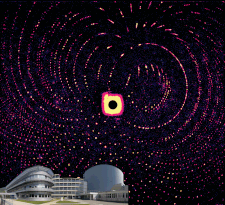
Cover illustration: Neutron Laue diffraction pattern recorded from a hydrogenated thaumatin crystal using the LADI-III instrument at the ILL (pictured bottom left) (Teixeira, Blakeley, Leal, Mitchell & Forsyth, p. 378).
protein structure communications
Structures of BA0252, an alanine racemase from B. anthracis, in the presence and absence of the inhibitor (R)-1-aminoethylphosphonic acid (L-Ala-P) and determined by X-ray crystallography to resolutions of 2.1 and 1.47 Å, respectively, are described.
The crystal structure of the plasmid-mediated class C β-lactamase ACT-1 has been solved at 2.4 Å resolution.
PDB reference: Class C β-lactamase ACT-1, 2zc7, r12zc7sf
The crystal structure of an acetyltransferase encoded by the gene PA1377 from Pseudomonas aeruginosa has been determined at 2.25 Å resolution. Comparison with a related acetyltransferase revealed a structural difference in the active site that was taken to reflect a difference in substrate binding and/or specificity between the two enzymes.
PDB reference: pitax, 2vi7, r2vi7sf
The crystal structure of S. aureus 5′-methylthioadenosine/S-adenosylhomocysteine nucleosidase has been determined at 1.7 Å resolution in complex with formycin A.
The X-ray structure of human CutA1 was solved in space group P212121, with unit-cell parameters a = 68.69, b = 88.84, c = 125.33 Å and six molecules per asymmetric unit.
PDB reference: CutA1, 2zfh, r2zfhsf
The crystal structure of 3-oxoacyl-(acyl-carrier protein) synthase II from T. thermophilus HB8 has been determined at 2.0 Å resolution and compared with the structures of β-keto-ACP synthases from other sources.
PDB reference: TtKAS II, 1j3n, r1j3nsf
crystallization communications
Rv2780, an alanine dehydrogenase from M. tuberculosis, has been crystallized in apo and NAD/pyruvate-bound forms. Preliminary crystallographic analysis shows that there is a hexamer and trimer in the asymmetric units of the apo and ternary complex forms, respectively.
A chitinase isolated from the latex of the tropical species Carica papaya has been crystallized. The addition of N-acetyl-D-glucosamine to the crystallization solution has improved the diffraction quality resolution of the crystal to 1.8 Å resolution.
The flavodoxin NifF from R. capsulatus, a candidate for nitrogenase reduction during nitrogen fixation, has been crystallized using the hanging-drop vapour-diffusion method. Preliminary X-ray data processing at 2.17 Å resolution allowed determination of the crystal system and unit-cell parameters.
Preliminary neutron crystallographic data from the sweet protein thaumatin have been recorded using the LADI-III diffractometer at the Institut Laue Langevin (ILL). The results illustrate the feasibility of a full neutron structural analysis aimed at further understanding the molecular basis of the perception of sweet taste. Such an analysis will exploit the use of perdeuterated thaumatin.
Crystals of the phosphotyrosine-binding domain 1 (PTB1) of the neuronal adaptor protein Fe65 grown in the presence of a mercury derivative show a dramatic improvement in resolution, permitting SAD phasing.
The haem-binding protein HbpS from Streptomyces reticuli was crystallized and diffraction data were collected to a maximal resolution of 2.25 Å.
A periplasmic membrane-fusion protein MacA from Actinobacillus actinomycetemcomitans, an essential component of the multidrug efflux pump in Gram-negative bacteria, was crystallized.
Decameric and monomeric forms of recombinant C49S mutant AhpC from H. pylori have been crystallized. Diffraction data were collected to 2.8 and 2.25 Å, respectively.
The cloning, purification and crystallization of a bacterioferritin from M. tuberculosis together with preliminary X-ray characterization of its crystals are reported.
C. reinhardtii centrin, an EF-hand calcium-binding protein localized to the microtubule-organizing center of eukaryotic organisms, has been crystallized in the presence of the model peptide melittin. X-ray diffraction data were collected to 2.2 Å resolution.
The Hyp-1 protein suggested to be a phenolic oxidative-coupling enzyme involved in the biosynthesis of hypericin, a medicinally important natural compound found in St John's wort (H. perforatum), has been expressed, purified and prepared in single-crystal form.
Alzheimer's disease is characterized by proteolytic processing of the amyloid precursor protein (APP), which releases the aggregation-prone amyloid-β (Aβ) peptide and liberates the intracellular domain (AICD) that interacts with various adaptor proteins. The crystallized AICD–Fe65-PTB2 complex is of central importance for APP translocation, nuclear signalling, processing and Aβ generation.
The crystallization strategy for the RNA polymerase I subcomplex A14/A43, which is based on iterative cycles of prediction, probing and removal of four flexible protein regions, is described.
The catalytic domain of collagenase G from C. histolyticum was expressed in E. coli BL21 (DE3) and purified using affinity and size-exclusion column-chromatographic methods. Crystals were obtained at 290 K by the sitting-drop vapour-diffusion method and diffraction data have been collected to 2.75 Å resolution.
Preliminary X-ray diffraction studies of a novel ring-cleaving enzyme from B. xenovorans LB400 encoded by the benzoate-oxidation (box) pathway.
Preliminary X-ray diffraction studies of the bradyzoite-specific surface antigen BSR4 from T. gondii are described.
MAP2569c from M. avium subsp. paratuberculosis, a putative glycosyltransferase implicated in mycobacterial cell-wall biosynthesis, was cloned, expressed, purified and crystallized. X-ray diffraction data were collected to 1.8 Å resolution.
The double mutant D30P/A31G of the Rop protein was crystallized with the aim of analyzing the loop region as a possible folding-control element. The crystals belonged to space group P21 and diffracted to 1.4 Å resolution.
Good-quality crystals of selenomethionine-substituted Msmeg_3380 were obtained by the hanging-drop vapour-diffusion technique and diffracted to 1.2 Å using synchrotron radiation.
Crystallization and X-ray diffraction data collection of the Fab fragment of the monoclonal antibody WO2 in the absence or presence of amyloid β peptides associated with Alzheimer's disease are reported.


 journal menu
journal menu















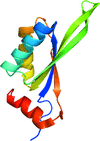

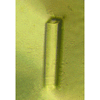



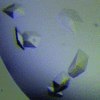



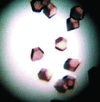
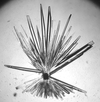







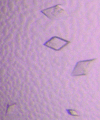


![[publBio]](/logos/publbio.gif)





